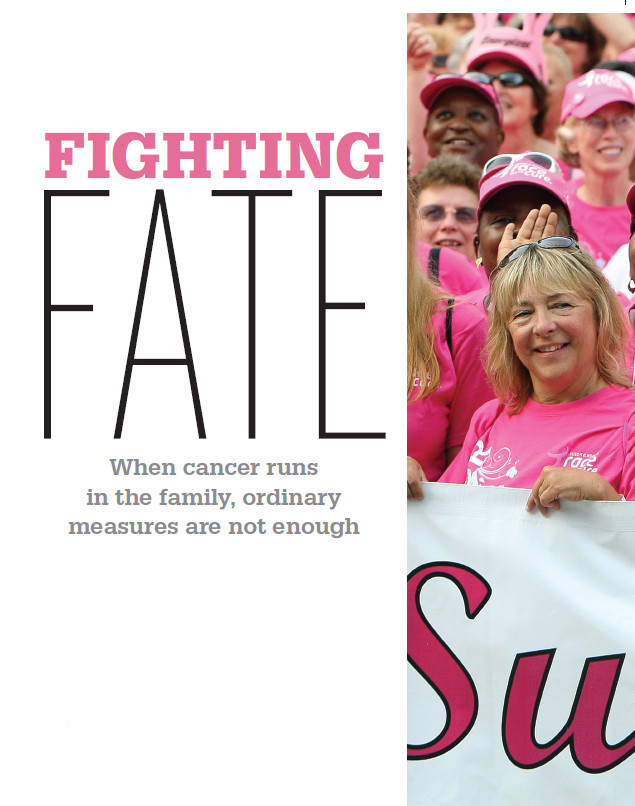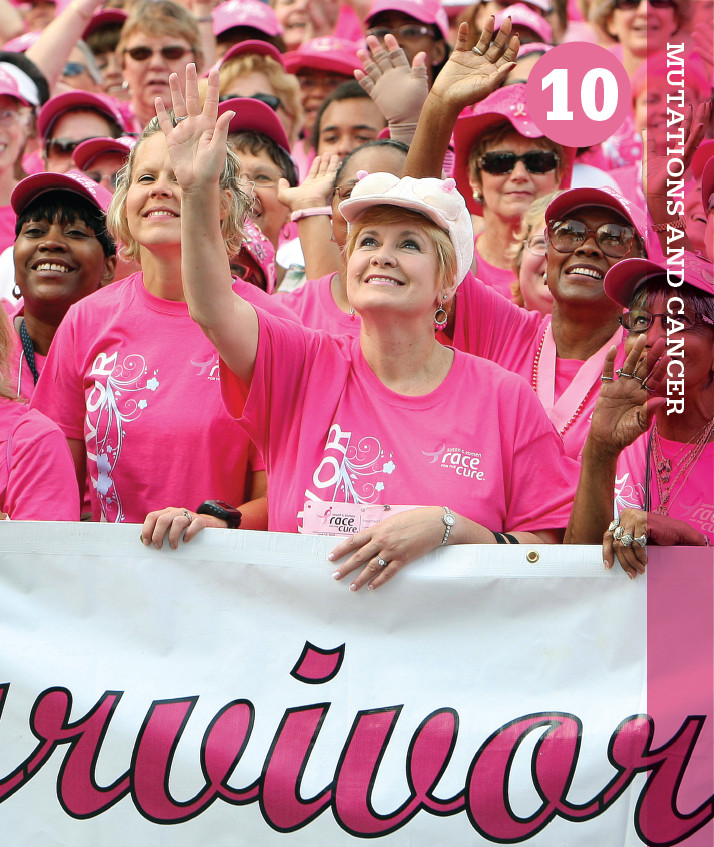212


DRIVING QUESTIONS
- What are mutations, and how can they occur?
- How does cancer develop, and how can people reduce their risk?
- Why do people with “inherited” cancer often develop cancer at a relatively young age?
In-Class Activity
Click here to access Lecture ppt specifically designed for chapter 10.
Click here to access Clicker Questions specifically designed for chapter 10.
213
214
 orene Ahern wasn’t totally surprised when she tested positive for breast cancer. “Half of me was expecting it all my life and part of me was saying, ‘No, this won’t happen to me,’” says the 47-year-old mother of two in Twinsburg, Ohio. She knew that her risk of cancer might be higher than average—her mother had died of cancer at 49. But until the day she learned the test result, Ahern, who took good care of herself and had a healthy lifestyle, had never fully believed she would develop cancer.
orene Ahern wasn’t totally surprised when she tested positive for breast cancer. “Half of me was expecting it all my life and part of me was saying, ‘No, this won’t happen to me,’” says the 47-year-old mother of two in Twinsburg, Ohio. She knew that her risk of cancer might be higher than average—her mother had died of cancer at 49. But until the day she learned the test result, Ahern, who took good care of herself and had a healthy lifestyle, had never fully believed she would develop cancer.
There was more bad news in store for Ahern. About a year after she received the diagnosis of breast cancer, Ahern had DNA extracted from her blood and tested for mutations in two genes–BRCA1, located on chromosome 17, and BRCA2, located on chromosome 13 (“BRCA” stands for “breast cancer”). Women who are born with mutations in either of these two genes have an exceptionally high risk of developing breast and ovarian cancers; men with these mutations are at higher risk for breast and prostate cancers. This test, too, was positive: Ahern had a mutation in one of her copies of the BRCA1 gene, which meant that she was at high risk for other cancers as well. Moreover, she could have passed on this mutation to her two children.
Half of me was expecting it all my life and part of me was saying, ‘No, this won’t happen to me.’
— LORENE AHERN
Aside from nonmelanoma skin cancer, breast cancer is the most common cancer to affect women. Breast cancer affects more than 200,000 women in the United States a year, according to the National Cancer Institute. For most women, the risk of developing breast cancer is about 12%, or 1 in every 8 women. For women with mutations in BRCA1 or BRCA2, however, the risk is much higher: a 40% to 80% lifetime risk of developing breast cancer and a 20% to 50% risk of developing ovarian cancer, depending on the particular BRCA alleles they carry.
The good news is that studies have shown that diet and lifestyle changes can dramatically cut a woman’s risk of getting cancer–just quitting smoking cuts the risk by 30%. The bad news is that prevention is not that simple for women with inherited predispositions to breast cancer–for this group, diet and lifestyle changes don’t necessarily make a difference. “Their cancers just behave differently,” says Thomas Sellers, Executive Vice President of the H. Lee Moffitt Cancer Center and Research Institute in Tampa, Florida. Even with traditional treatments like chemotherapy and radiation, hereditary breast cancers are more likely to recur in the same tissue or other tissue in the body. But these women do have treatment options that can drastically reduce their risk of getting cancer or of having it recur.